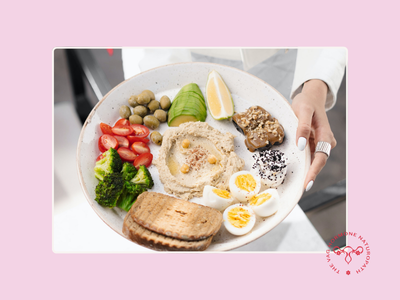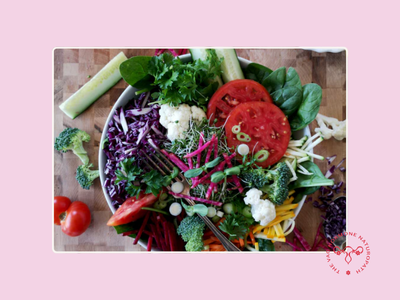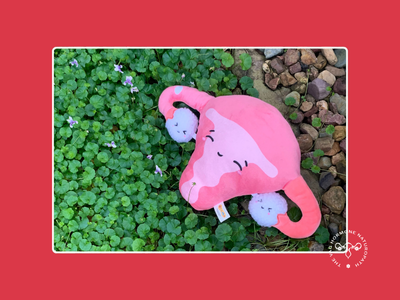· Diet · 4 min read
Food Choices That Support Vaginal + Hormonal Balance
Simple, evidence-informed food choices can support hormonal balance, microbiome health, and vaginal resilience. Learn which foods to include, and how to use them with intention. Learn how fibre, fermented foods, omega-3s, polyphenols, and hydration can support vaginal microbiome and hormone health naturally.

When it comes to vaginal and hormonal health, the conversation often focuses on supplements, cleanses, or hormone therapy. All great options and will definitely get things started. But what’s on the plate can quietly shape the foundation for balance.
Emerging research continues to show that food influences the gut–vaginal axis, hormone metabolism, and inflammatory pathways. These are all key players in symptoms like dryness, irritation, irregular cycles, or mood changes.
Below are evidence-informed dietary patterns that can tilt the internal environment toward resilience and balance. (Remember: this isn’t one-size-fits-all — every body is individual. The key is to test, observe, and adjust with guidance.)
1. High-Fibre, Plant-Rich Foods Fibre doesn’t just support digestion — it feeds beneficial gut microbes, which in turn influence the vaginal microbiome and hormone metabolism. Whole grains, legumes, vegetables, and fruit form the base of a truly restorative diet.
Why it matters:A thriving gut microbiome helps metabolise oestrogen, reduces systemic inflammation, and supports immune health — all vital for maintaining vaginal balance and regular cycles.
Naturopathic note:If fibre intake is currently low, increase gradually to prevent bloating or discomfort, especially if digestion is sensitive. Pair fibre-rich meals with adequate hydration to keep things moving comfortably.
2. Fermented and Probiotic Foods Live-culture yoghurt, kefir, kombucha, sauerkraut, miso, or kimchi can introduce beneficial bacteria that help strengthen microbial diversity — starting in the gut, with flow-on effects to vaginal ecology.
Why it matters: A balanced gut environment often correlates with more stable vaginal flora. Certain Lactobacillus strains (like L. crispatus and L. jensenii) thrive when the body’s internal environment is nourished from within.
Naturopathic note: Go slow. Introducing fermented foods too quickly can cause bloating or histamine reactions in sensitive individuals. Choose unflavoured, low-sugar versions — excess sugar can undo the benefits. And watch out for those sugar alcohols (erythritol, mannitol, sorbitol, xylitol etc), they can be just as bad as the sugar itself.
3. Omega-3 and ALA-Rich Foods Chia seeds, flaxseeds, walnuts, and cold-water fish (like sardines, salmon, or trout) contain anti-inflammatory fatty acids that nourish cell membranes and modulate hormonal signalling.
Why it matters: Omega-3s appear to support Lactobacillus growth and reduce inflammation in the vaginal environment. They also help maintain healthy tissue integrity, which is vital for comfort and moisture, especially through perimenopause and beyond.
Naturopathic note: Ground or soak seeds to improve nutrient absorption, and aim for variety rather than perfection. Plant and marine sources complement one another beautifully.
4. Colourful, Polyphenol-Rich Plants Think berries, green tea, pomegranate, red cabbage, leafy greens, and herbs. These foods are naturally rich in polyphenols — antioxidant compounds that reduce oxidative stress and may help maintain microbial balance.
Why it matters: Oxidative stress can alter pH and cell turnover, influencing both hormone balance and vaginal health. Polyphenols provide a gentle, food-based buffer against that stress.
Naturopathic note: Rotate produce colours and types regularly. Diversity of plants = diversity of microbes. A rainbow plate supports both resilience and enjoyment.
5. Hydration and Mineral-Rich Water Hydration often gets overlooked in vaginal health and yet even mild dehydration can concentrate secretions, stress epithelial tissue, and affect overall lubrication.
Why it matters: Adequate fluid intake supports detoxification, tissue integrity, and circulation — the subtle systems that keep hormones and microbiomes humming.
Naturopathic note: Aim for steady hydration through the day rather than large volumes all at once. A pinch of unrefined sea salt, coconut water, or natural electrolytes can improve absorption if fluid retention or dryness is a concern.
A Holistic Perspective Food can’t “fix” everything, but it changes the environment. When the body is consistently nourished — not restricted — healing has fertile ground to take root.
Understanding how food, hormones, and the microbiome interact is the first step toward empowerment. For deeper insight into how these patterns show up individually, functional testing can reveal the full picture.
Booking a Vag Hormone Assessment allows us to begin exploring these connections — developing a plan to translate data into personalised care that supports both physical and emotional wellbeing.




